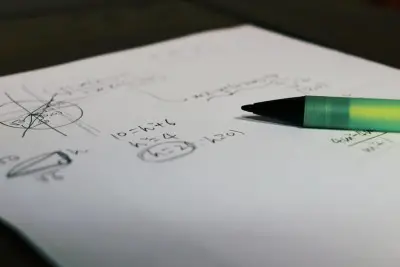Have you heard the news? The SAT is changing in 2024. Yes, it’s true. The College Board, the creators of the SAT, are revamping the entire exam for spring of 2024. PSAT test takers will see the digital exams even sooner but for our purposes, we’ll be focusing on the SAT.
Let’s look at the important things you need to know about the new SAT.
| The final paper-based SAT exam for US students is December 2, 2023. The first digital exam for US students is March 9, 2024. |
Will the digital exam essentially be the same as the paper and pencil exams?
No! According to The College Board, “We’re taking the opportunity to make the SAT a far better test experience for you.” What does that mean? It means the digital exam will encompass lots of changes across the reading, writing, and math sections.

The digital exam is an adaptive test.
Perhaps the biggest change is that the digital exam is adaptive. What does it mean for a test to be adaptive? This means that the test “adapts” to the test taker’s skills.
If the student is doing very well early on in the exam, the questions later in the exam will be more difficult. If a student is having some trouble on the early questions, the later questions will be easier. The test “adapts” in real time, essentially customizing the test experience for different students.
The SAT has divided both the English and math sections into two modules. On test day, all students will have the same questions for the first English module and for the first math module. The second module for English and math will change depending on how well a student did on the first module.

What is staying the same?
The test will still be scored on a 1600 point scale. The digital test will be administered in schools with a proctor present, not at home. And, the test still measures the skills and knowledge that colleges want students to know.
What are the different parts of the new digital SAT? How long does the exam take?
Here’s a handy chart that summarizes the parts of the new exam:
Summary of the Testing Components
| Module 1 | Module 2 | TOTALS | |
| Reading & Writing (RW) | 27 questions – mixture of easy, medium, and difficult questions. All students have the same questions. Total time: 32 min. | 27 questions – test adapts so these questions will vary in difficulty depending on the student’s performance in Module 1. Total Time: 32 min. | 54 questions Total Time: 64 min. |
| Math | 22 questions – mixture of easy, medium, and difficult problems. All students have the same questions. Total time: 35 min. | 22 questions – test adapts so these questions will vary in difficulty depending on the student’s performance in Module 1. Total Time: 35 min. | 44 questions Total Time: 70 min. |
Students will be testing for 2 hours and 14 minutes. That’s good news! The pencil-and-paper SAT took a lot longer. The hope is that the shorter exam time will alleviate some of the stress and fatigue associated with the longer exam. Students will get a 10 minute break between the English and math sections.
Does the digital SAT still have an experimental section?
If you’ve taken a paper-and-pencil SAT exam, you may have had an experimental 20-minute 5th section in English or math administered at the end of the exam. The College Board uses the questions from this section to collect data about new types of questions; as such, the scores on this section don’t count toward a student’s final SAT score.
There is no 5th experimental section on the new digital SAT. There are 2 “pretest” or experimental questions in each module across RW and math, for a total of 8 questions that won’t count toward your score. The catch? Unlike the paper exams, the experimental questions are mixed into the normal problems so you won’t easily recognize them.
Can I return to a question on the digital exam?
One concern students likely have is if they’ll be able to skip a question and then return to it. On the paper exam, within a section, you could skip a question and go back to it during the allotted time for that section.
The digital exam will allow students to flag individual questions they wish to go back to review. Students will also be allowed to use scratch paper and pencil for computations.
Can I use my calculator on any part of the math exam?
Yes! Unlike the paper test, students may use an approved graphing calculator on all math questions on the SAT! There is also a built in graphing calculator on the math sections. For many, this is a big sigh of relief!
What about a reference sheet with formulas?
You may remember that many geometry formulas were given to students at the beginning of the math sections on the paper SAT. Once again, students will have access to common formulas that are needed for the math sections, so no worries there.
What types of questions are on the digital SAT?
| Skills Tested | Types of Questions | |
| Reading and Writing (RW) | Comprehension and reasoning skills when reading passages across many subject areas. The test also measures command of evidence, expression of ideas, and the appropriate use of grammar and punctuation. | Multiple choice questions – 4 options per question. Information and Ideas – 26% Craft and structure – 28% Expression of ideas – 20% Standard English conventions 26% |
| Math | Problems across a wide range of skills: algebra, problem solving, data analysis, solving complex equations, geometry, and trigonometry. Word problems are shorter than on the paper and pencil test. | Most problems are multiple choice – 4 options per question. Approximately 75% of the math problems are multiple choice. Some questions are student-produced responses. Approximately 25% of the problems are student-produced responses. Algebra – 35% Advanced Math – 35% Problem Solving and Data Analysis – 15% Geometry & Trigonometry – 15% |
Other Changes in RW and math
Students who have taken a paper exam in the last few years may well remember that the word problems in the math section could be very lengthy! One word problem could have many sentences and take up a significant part of the page. The digital SAT will still have word problems but they won’t be as long and the language will be more direct.
Students may also remember the reading and writing passages were very long with multiple questions attached to each passage. The new RW section will have shorter texts to read with one question attached to it.
If students get different questions on Module 2, how does The College Board determine a student’s score?
The formula for scoring the current paper-and-pencil exam is simple: students receive a raw score for both the English and the math sections of the SAT which translate to a scaled score out of 1600 points. Since all students take the same test on a given test day, the scaling is quite simple.
Just as before, students should answer every question. There are no guessing penalties for incorrect answers. The difficulty level and the number of correct answers will determine the student’s final score. Students who get more difficult questions correct will score higher than students who get the same number of easier questions correct. One of the advantages of an adaptive SAT exam is that it allows for a more efficient test taking process. The test is significantly shorter than the paper exam.
Sample Score Report
(Source: satsuite.collegeboard.org)
Do I need my own laptop to take the digital exam?
No, but you have the option of using your own laptop or tablet or a school-issued device. If for some reason a student can’t access a device through their school, the College Board will loan a student a device they can borrow. Students will have to download and set up the Bluebook app before test day.
How can I prepare for the digital exam?
Thankfully, the College Board isn’t going to change the format of the SAT without also providing students with the necessary tools to prepare for the exam. The College Board provides lots of options for preparing for the exam. Check out this link: Practice for the SAT.
What happens if there is a problem with technology on the day of the exam?
The College Board has already been administering digital SAT exams for international students which has helped them prepare to launch the new exam in the US. And, this fall, the PSAT exam is going digital.
As with all of technology, things can happen: internet disruptions, a computer may break, power outages, etc. The College Board will do all it can to ensure a good testing experience!
The exam application has a built-in safety feature so if the internet disconnects, students’ answers are still saved and no time is lost on the exam. There will also be a designated technology monitor at every test center to help address technological issues.
A lot is changing for the SAT in 2024. Have no fear! The changes will be good ones!
You can learn about some important SAT Math topics here.
You can find some helpful SAT Math formulas here.
I hope you found this article helpful. If so, please share it with someone who can use the information.
Don’t forget to subscribe to our YouTube channel & get updates on new math videos!
About the author:
Jean-Marie Gard is an independent math teacher and tutor based in Massachusetts. You can get in touch with Jean-Marie at https://testpreptoday.com/.



